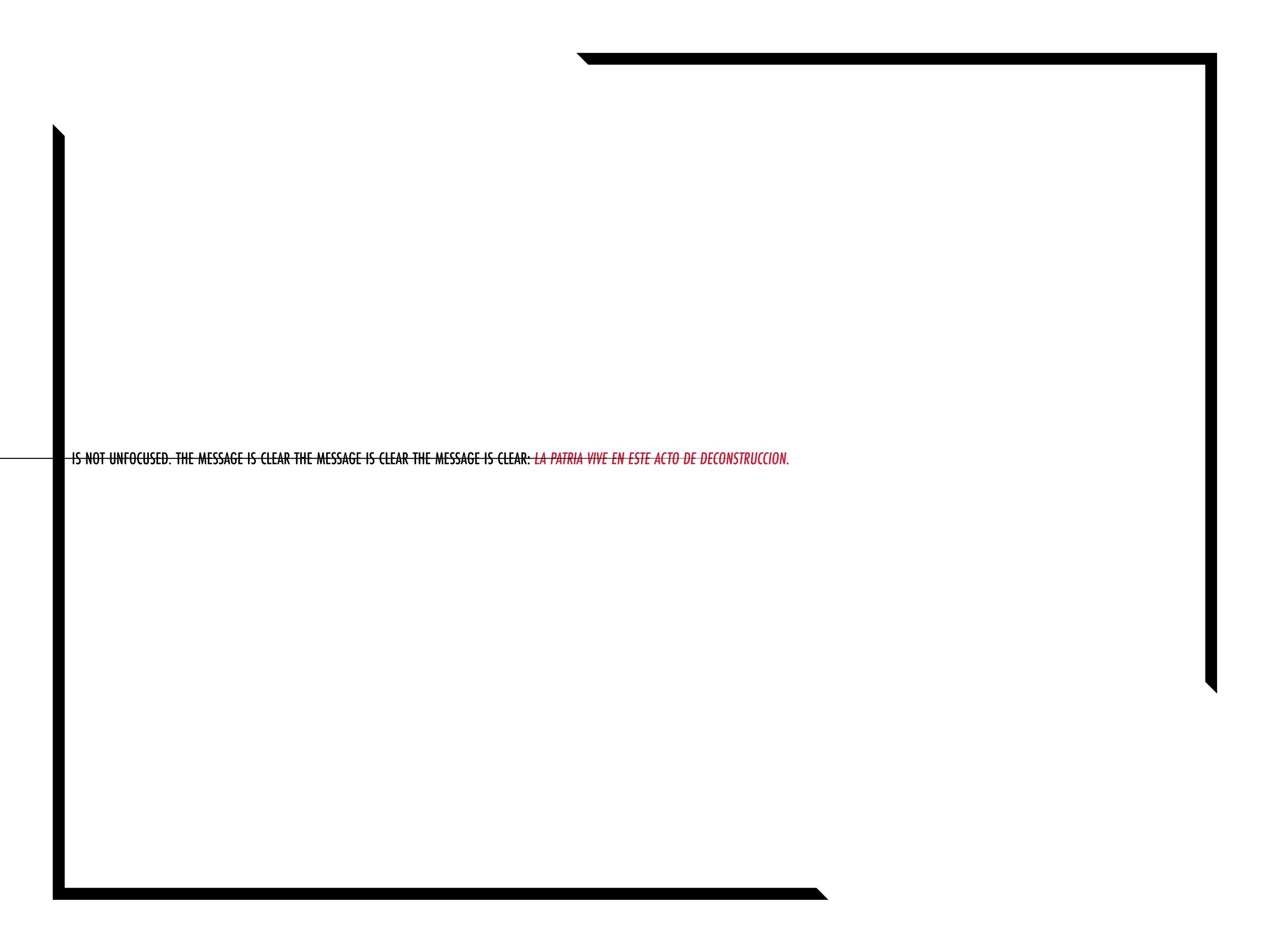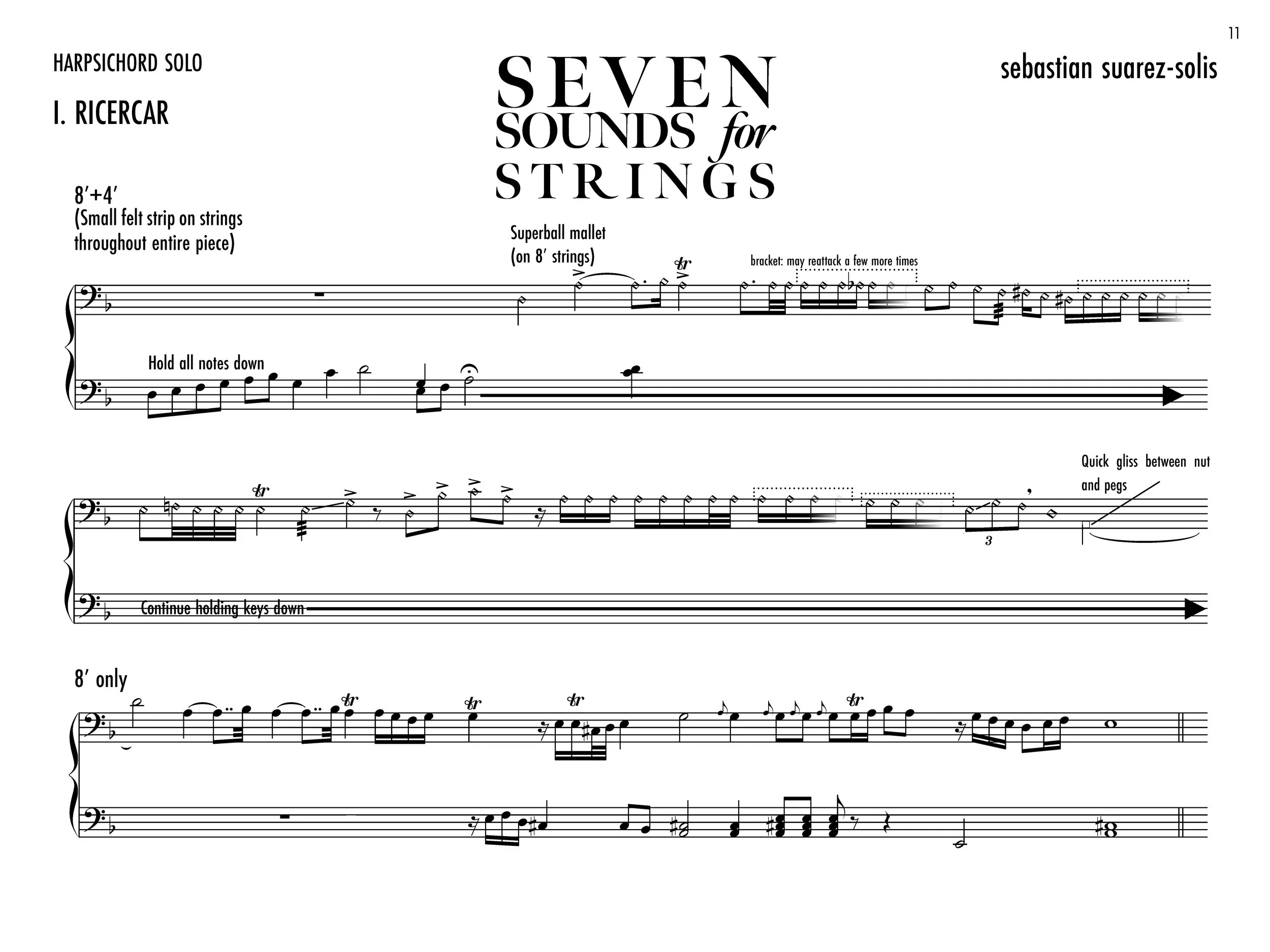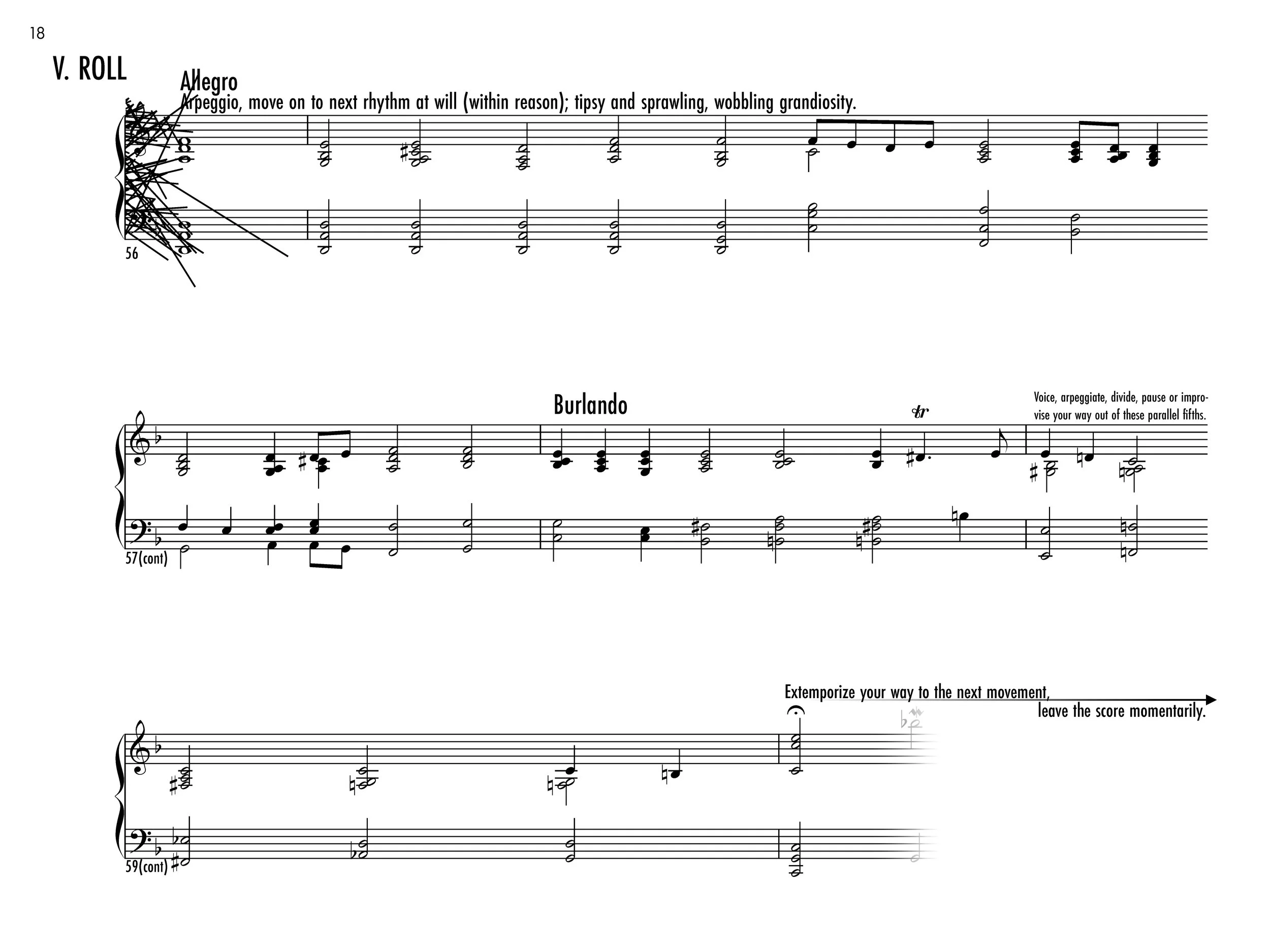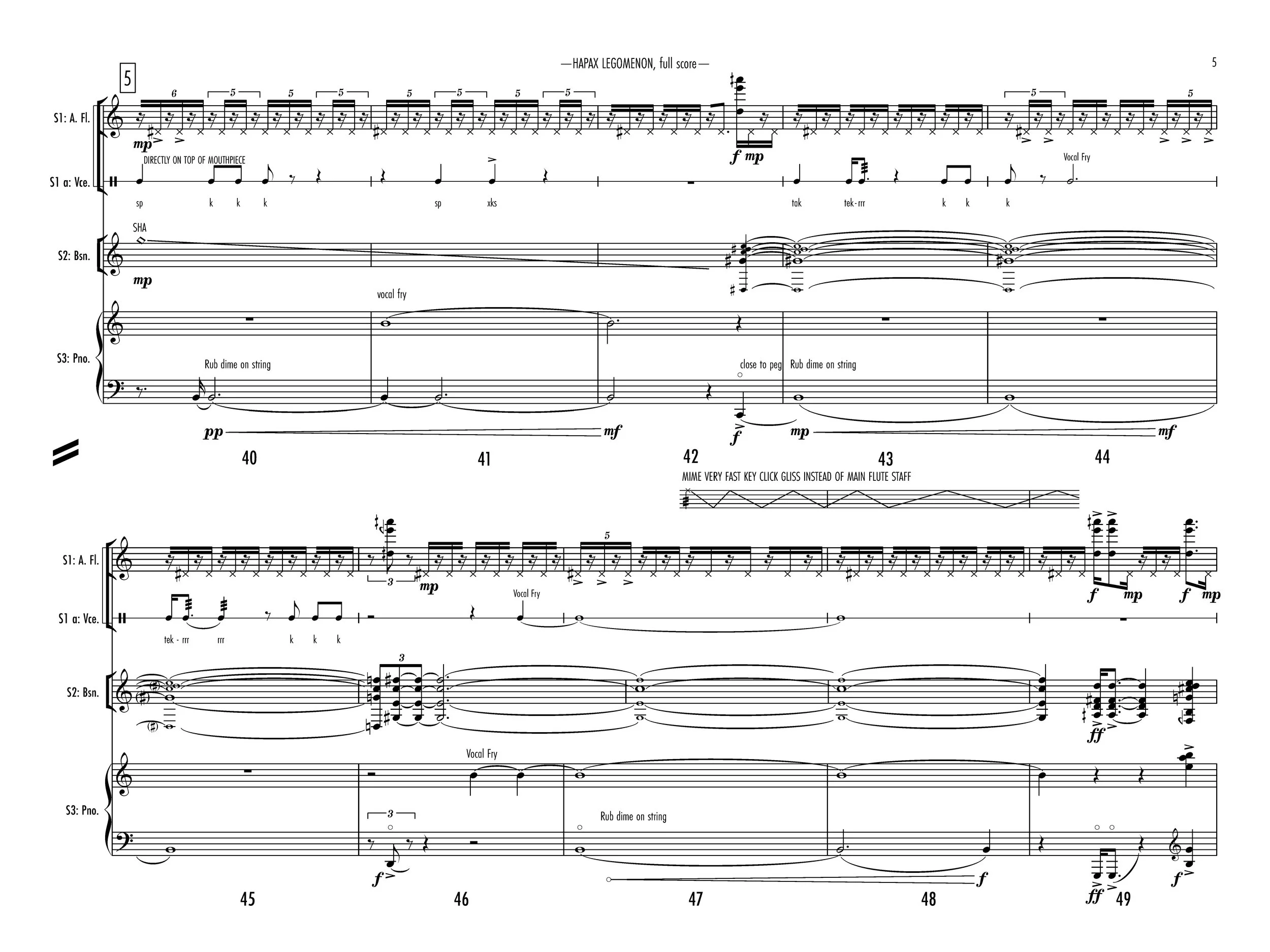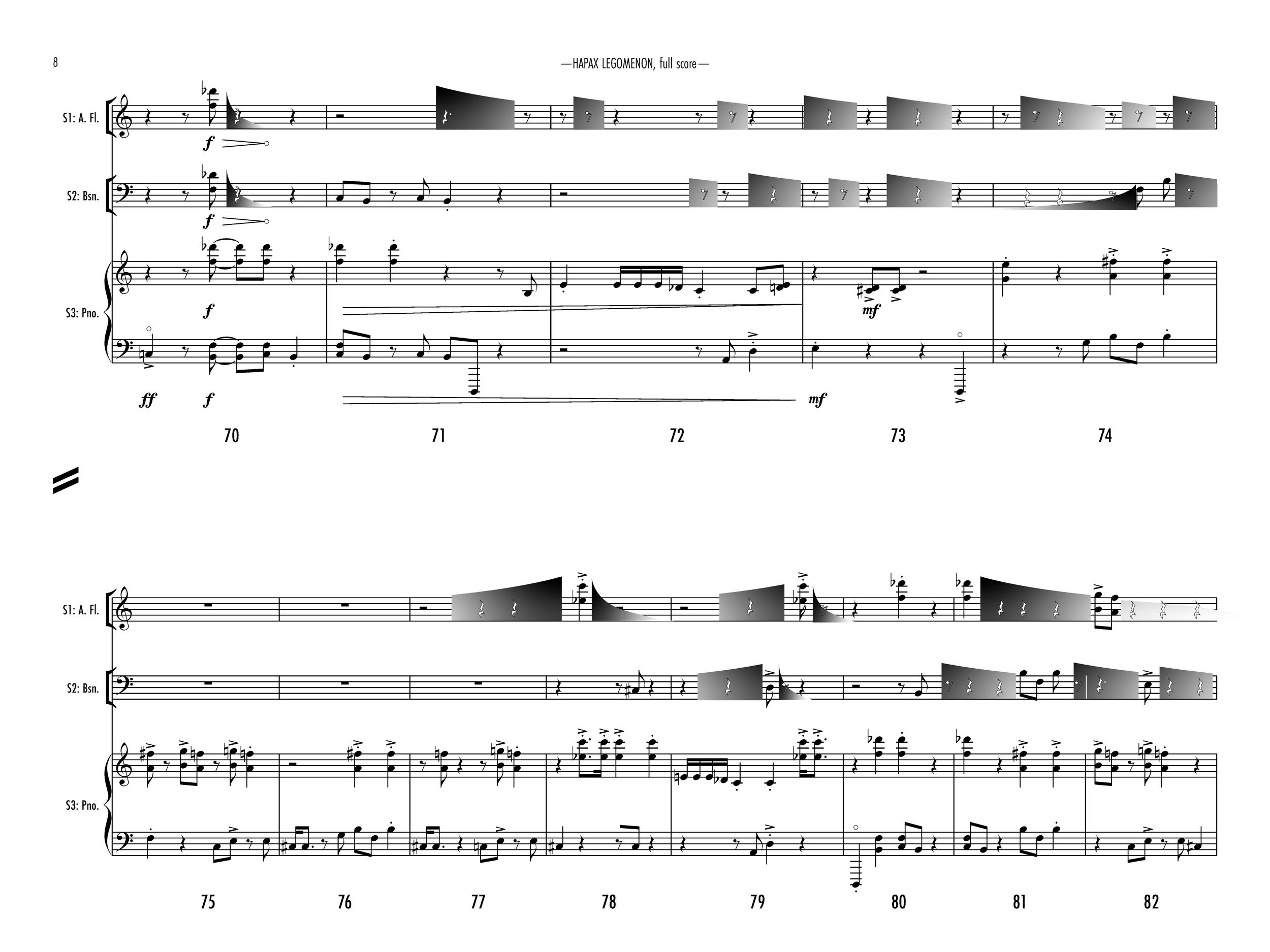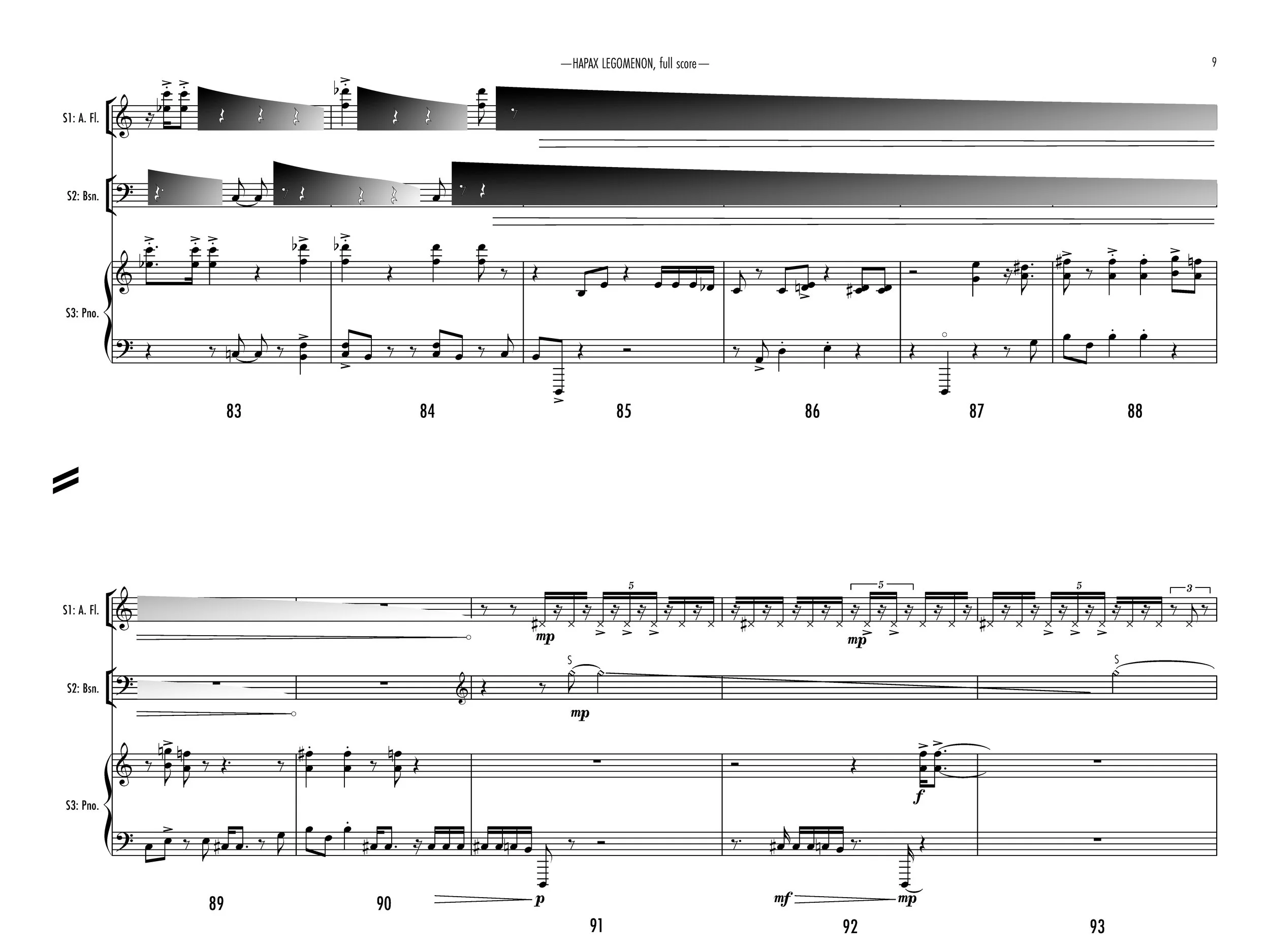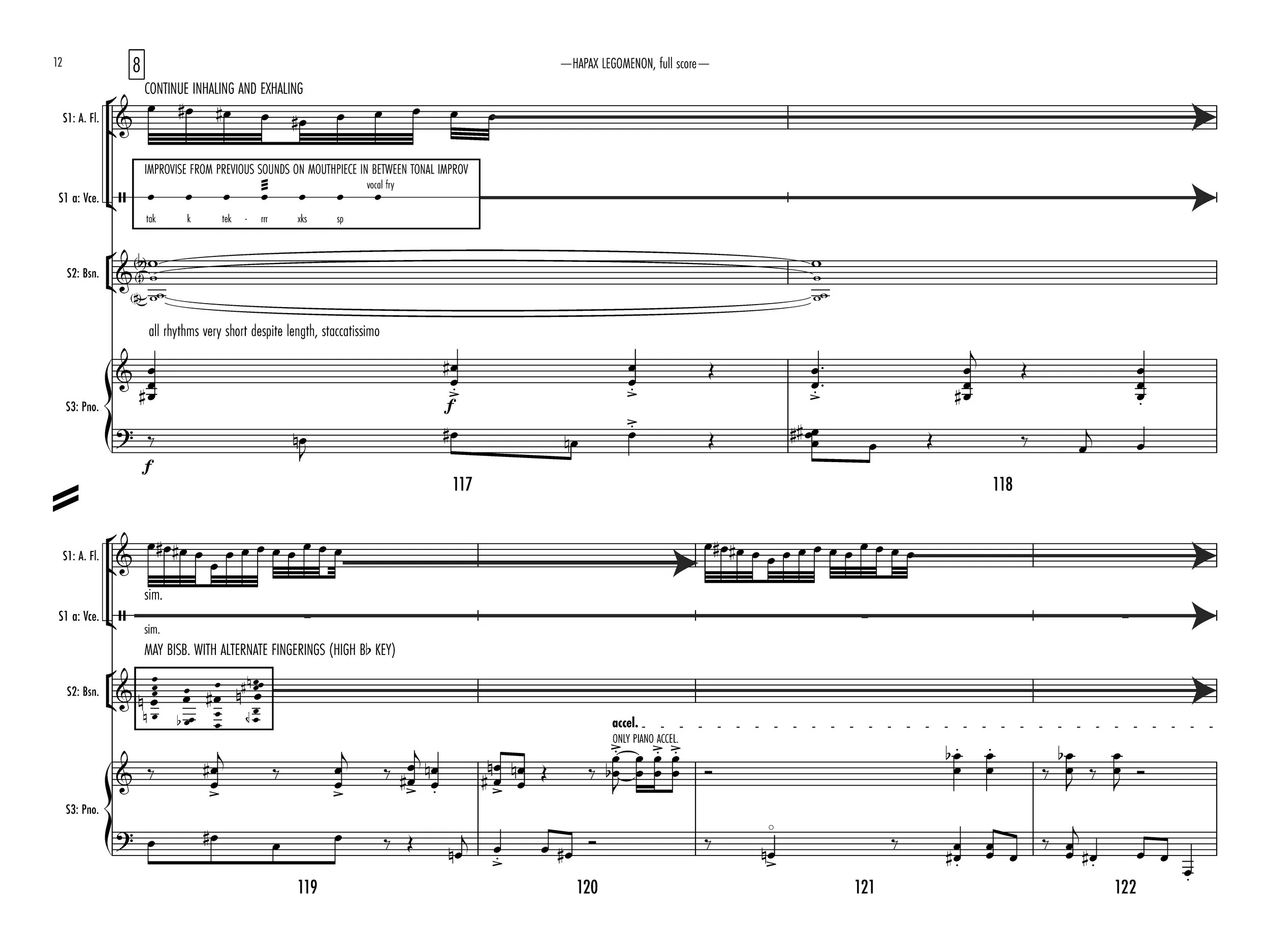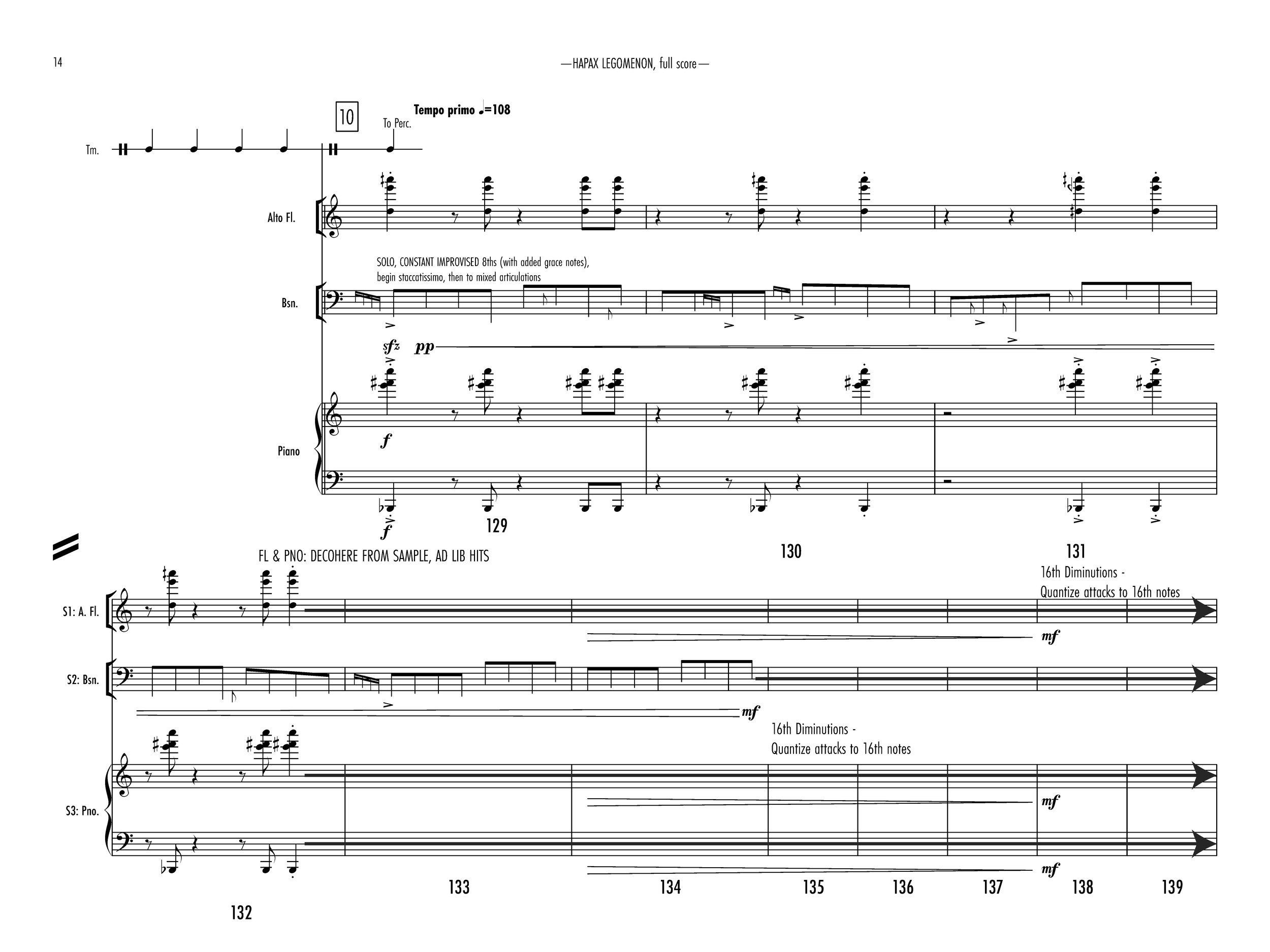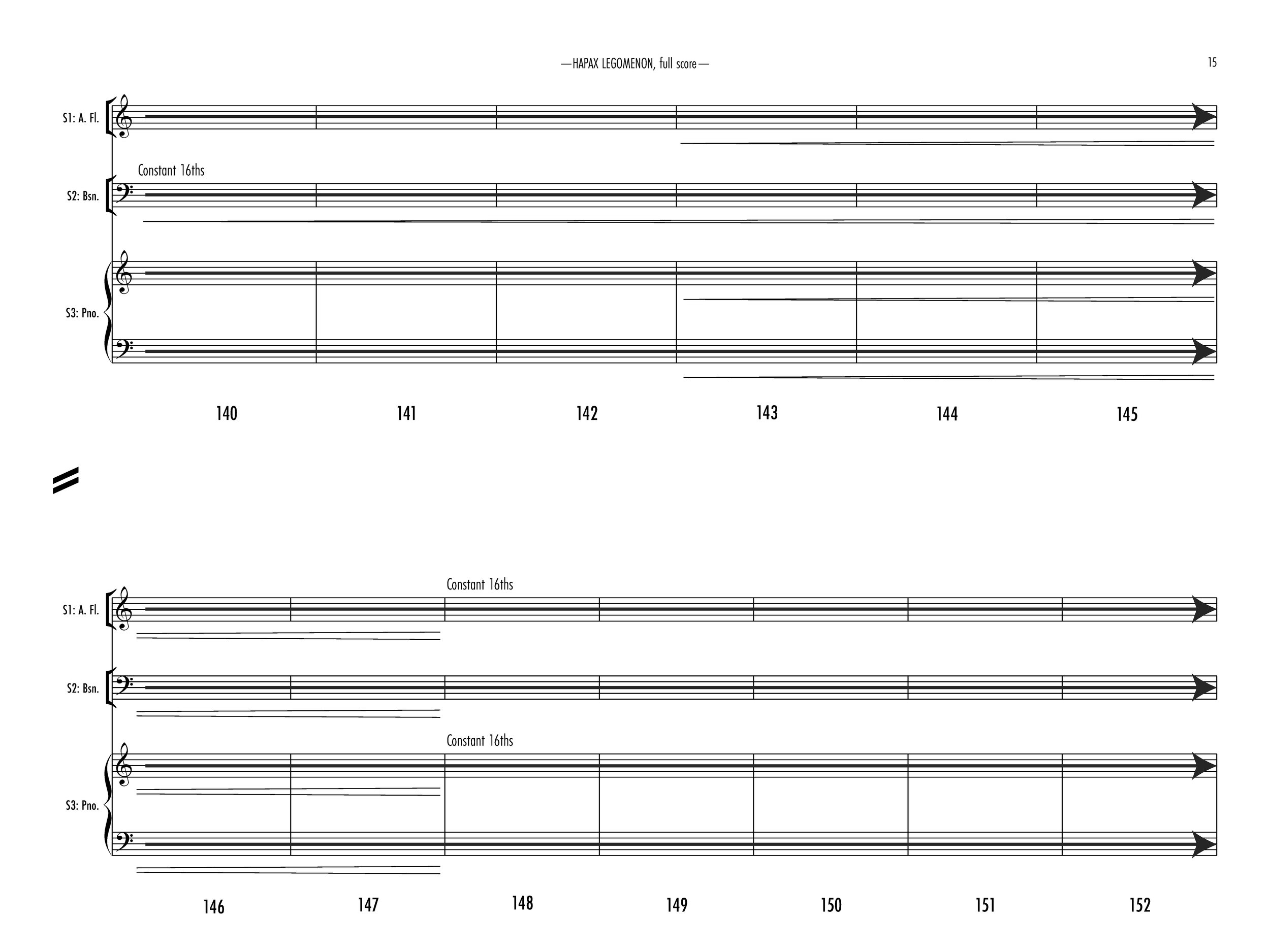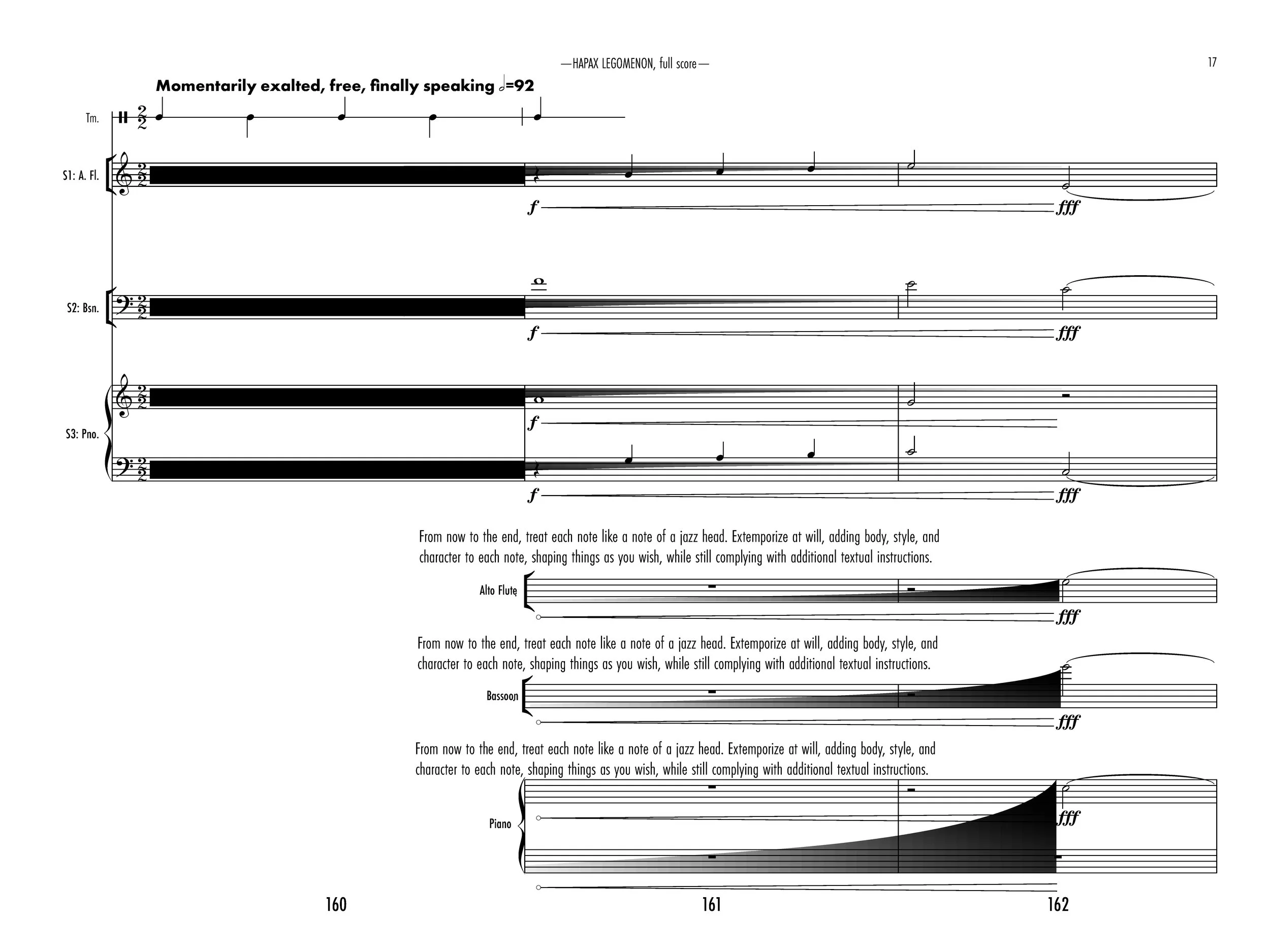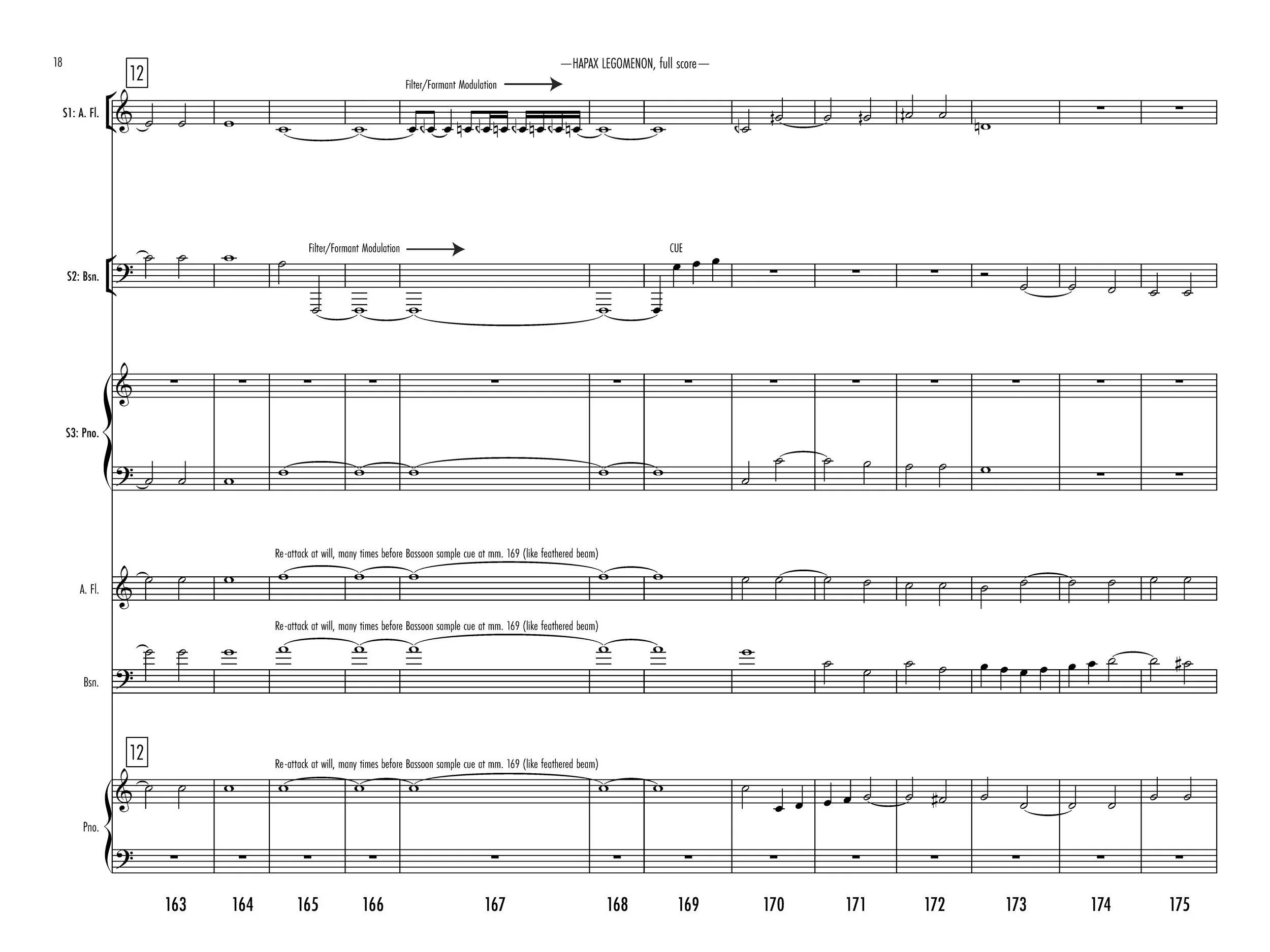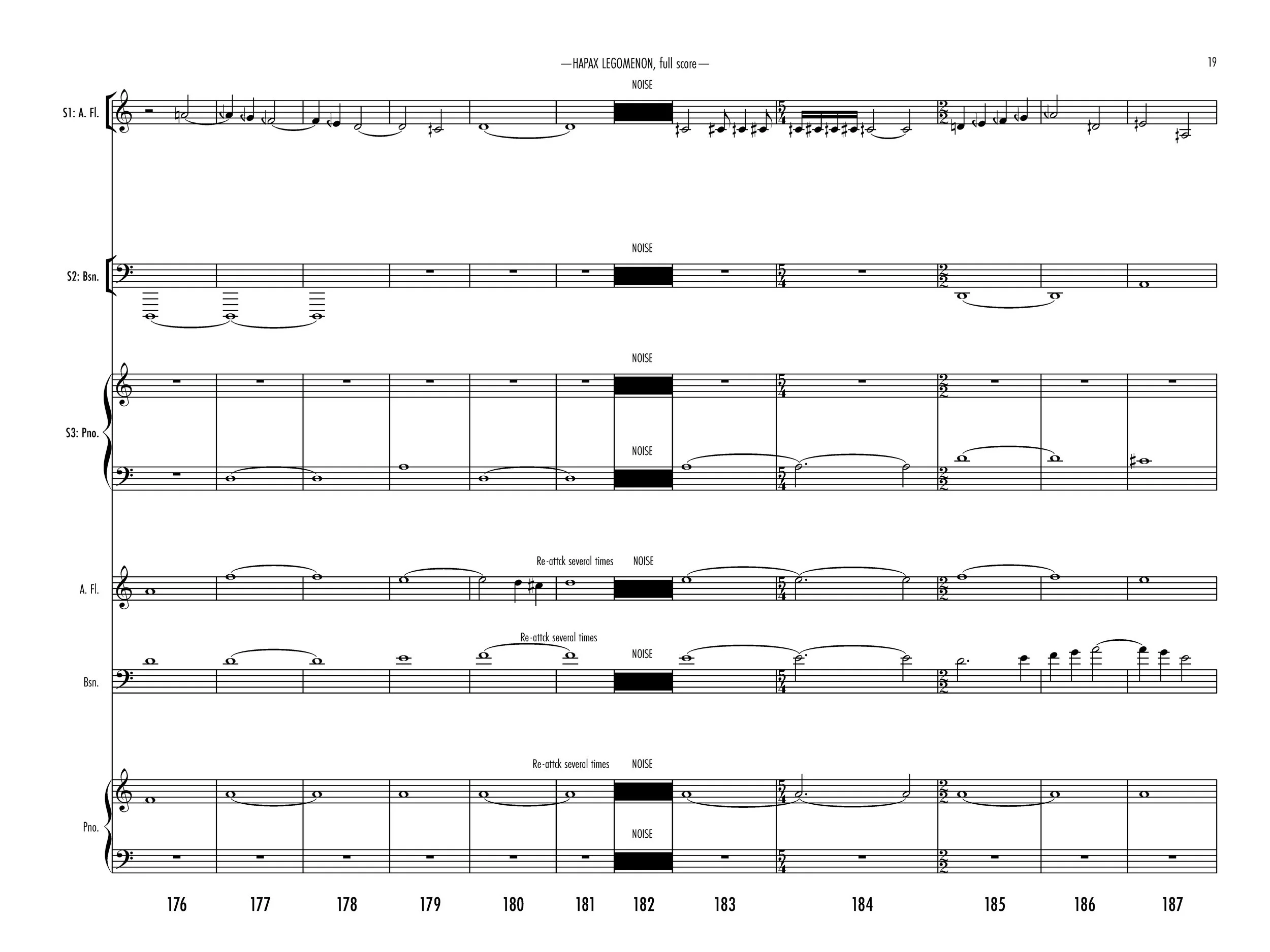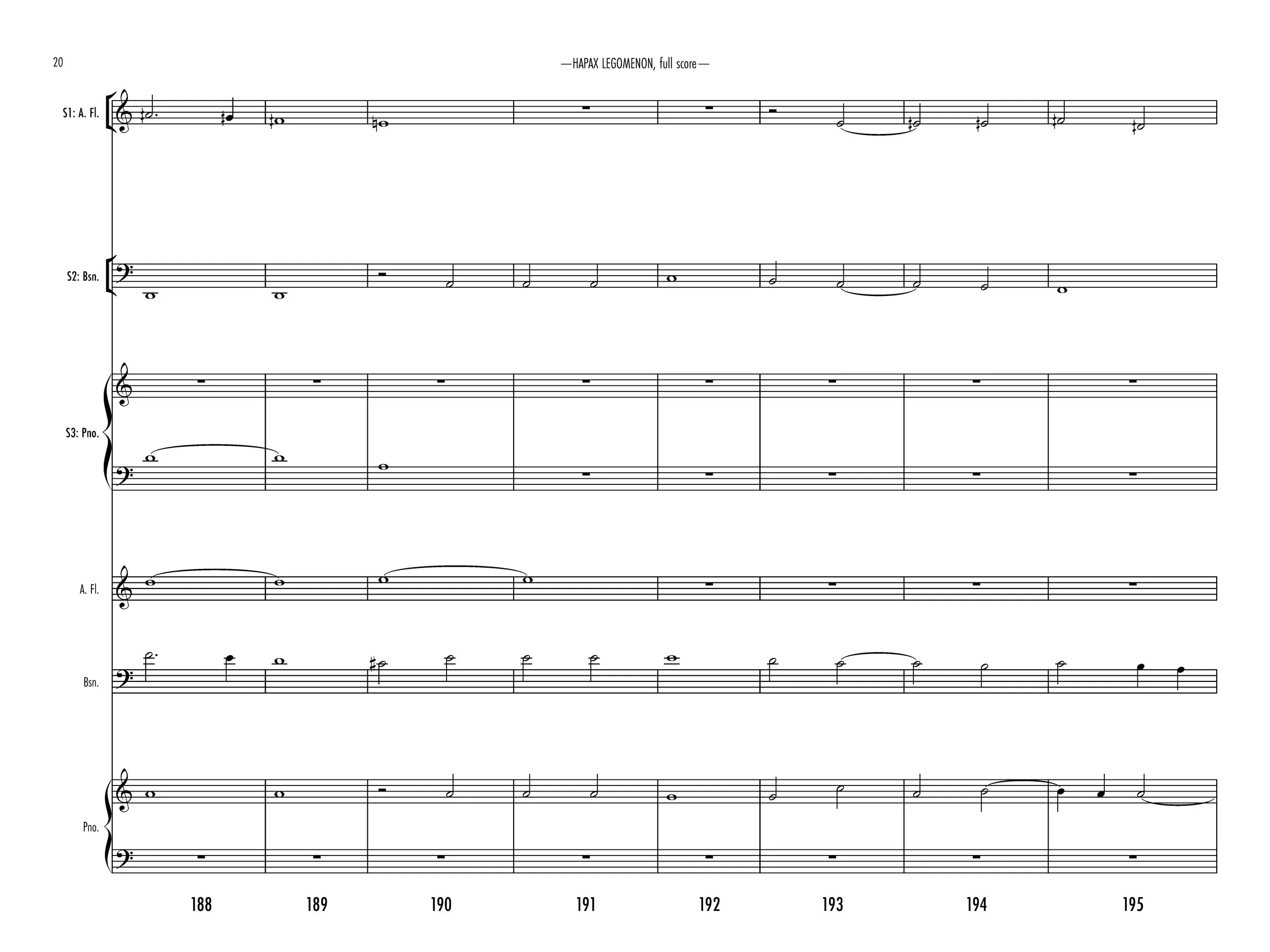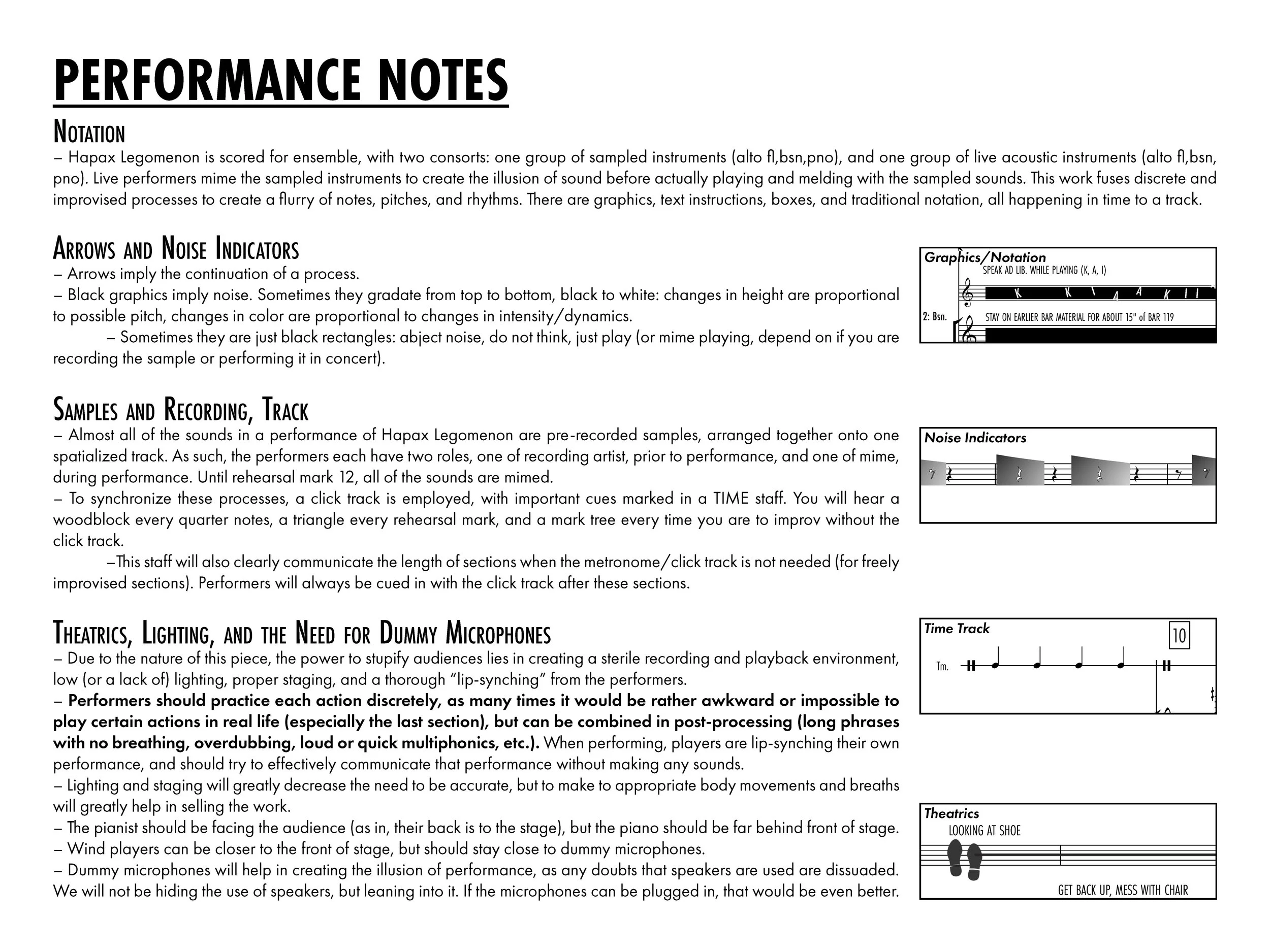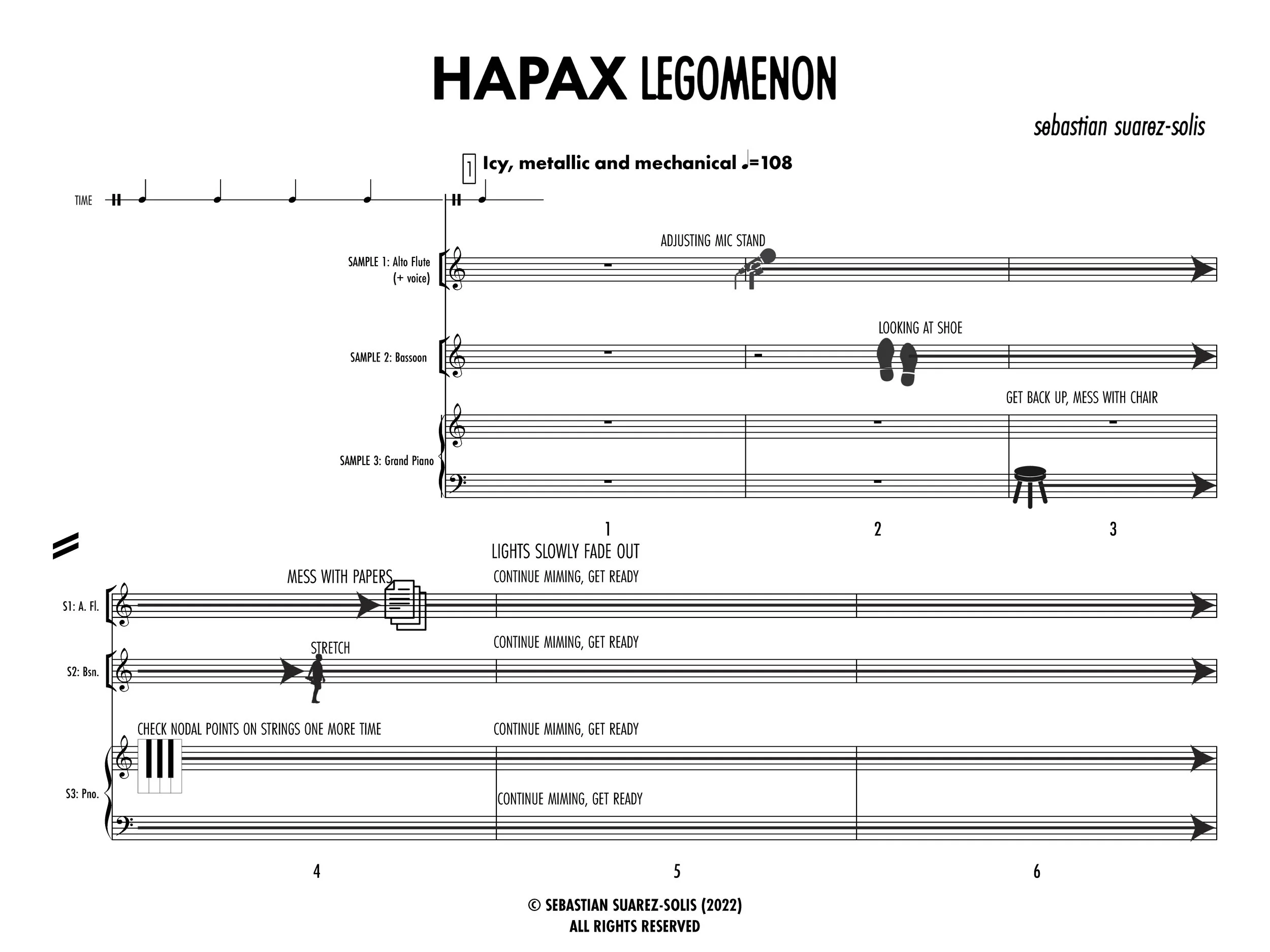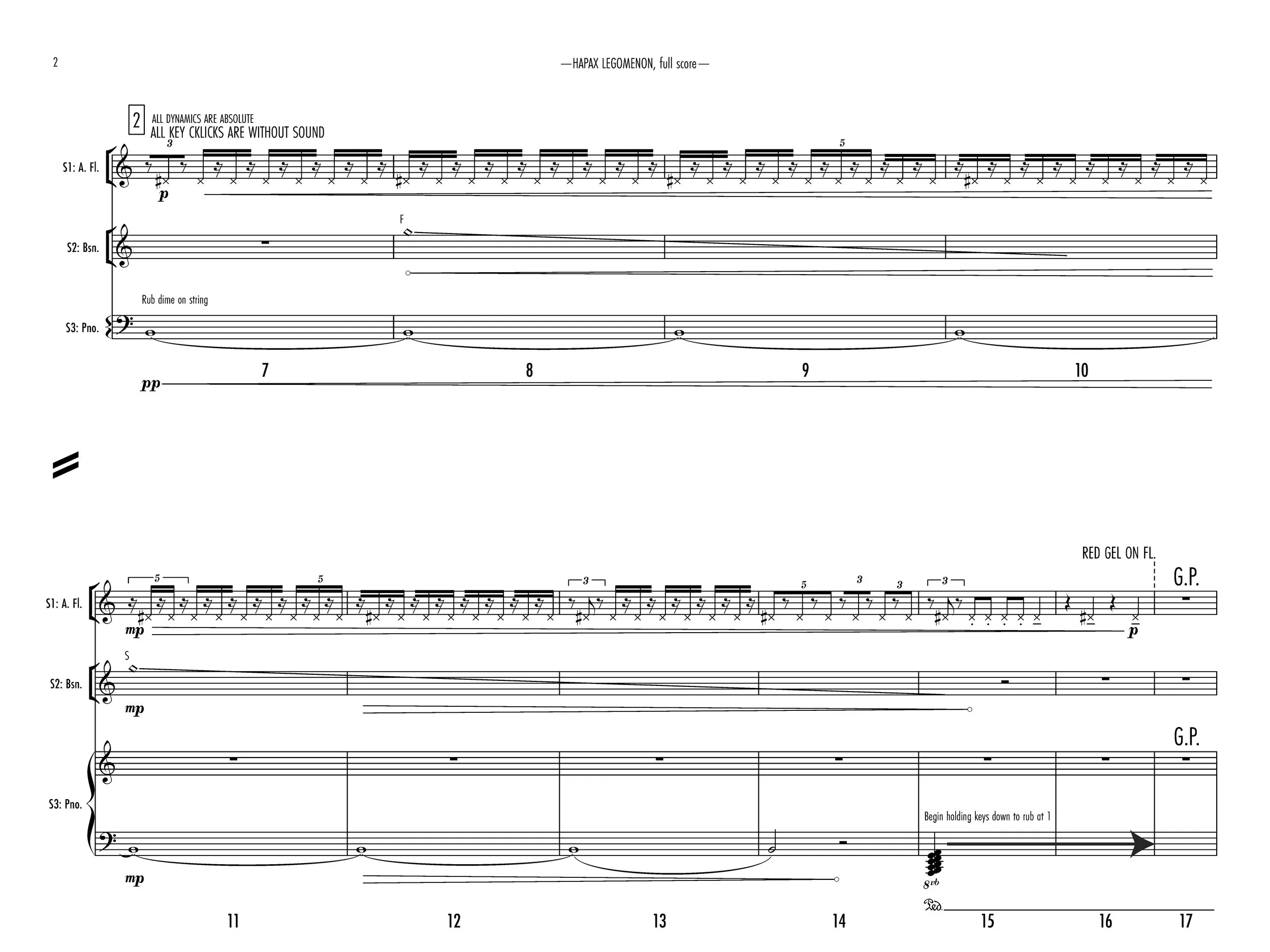sebastian
sebastian
my name is
sebastian
painter
instrumentalist
composer
composer
visual artist
amplified gambist
collaborative improviser
sculptor
harpsichordist
poet
consultant
???
sound designer
!!!
writer
photographer
performer
musician
laptopist
***
painter instrumentalist composer composer visual artist amplified gambist collaborative improviser sculptor harpsichordist poet consultant ??? sound designer !!! writer photographer performer musician laptopist ***
i am a Venezuelan-American
below is a portfolio of recent workseach piece has complete pdfs (cued up to the right page) and audio/video with timestamps for important moments1: Seven Sounds for Strings (2022)
for prepared harpsichord, played by Sebastian Suarez-Solis
early keyboard experimentation as a form of decolonization.
Not only is this a keen insight into my work with early instruments and the pre-classical idioms, it shows my eye for the visual and dramaturgical, as well. Each movement exhibits its own viewpoints, ideologies, and faults (much like characters in a play) which the performer must navigate or fight against. In it, a program note homage to Nam June Paik (which reads more like a musical manifesto) and superball mallet-assisted perturbation of the innards of the harpsichord. While the first and last movement function as a treatise for what is still yet undiscovered on the harpsichord, the middle movements burst with character, challenging the player at times with ideological, structural, and logical constraints.
[09:27-11:30]
pg. 19, bar 65[0:00-1:27]
pg. 11, bar 1timestamps!2: String Quartet No. 2 "soundnoisemusic” (2022)
for Parker Quartet
retuned string quartet, bent baroque wailing, white noise + formalized music + sound
[8:38-11:00]
page 24, bar 132[0:59-2:30]
page 12, bar 4Apart from being an in-the-dark, split intonation post-spectral exploration, this piece also showcases my work with transparency graphics. Gold marker – digitally modified to appear the color of lacquer – fills in many sections, allowing members to improvise above, around, with, or against the textures and conditions provided. Transitory bouts of sounds (pure sonic phenomena with minimal academic or social prescriptions), music (sounds with academic or social prescriptions), and noise (when those two interact, when things get so complicated or random, white noise, etc) pierce the form.
3: Hapax Legomenon (2022)
for ensemble, Ensemble Dal Niente
samples. pantomime. lighting. a musical prank.
[1:04-5:22]
page 4, bar 29This is an example of my continuing practice with playback and sampling, recording instrument samples shortly before performance for playback onstage. The ensemble is made up of two consorts, one virtual and the live group on stage; the live consort, for the most part, act out the sampled sounds, making almost no onstage noise. dummy mics and foot pedals connected to nowhere abound.
some more works
visual pieces, installations, MaxMSP patches, etc…
dex digital sample library, a collection of “new music”-ready audiovisual samples for improvisations and productions, recorded by commissioned artists. first public call for scores January 2023.
gamba samples put through the sonic blender.
[8:35-9:48], [4:53-6:04]
meta-improvisation no. 1 [THE DEATH OF THE GAMBA] is a fixed piece for bass viol and picture which embodies a newfound interest in the remixing of my recorded sound and samples. I've been recently really enamored by the concept of playback, how we listen, on top of finding new ways to interpret and interact with my own material.[14:35-17:45] [19:31-23:23] [57:32-58:50]
LIVE ELECTION BINGO:
collaborative series with Tyler Jordan and Thomas Milovac
each collectively on: piano, bass guitar, double bass, feedback setup, laptop (amplified by sonic sculpture), sonic sculpture (kitchen knife, contact mic); painting, sculpture
SUPREME COURT OF THE UNITED STATES _________________ No. 19–1392 _________________ THOMAS E. DOBBS, STATE HEALTH OFFICER OF THE MISSISSIPPI DEPARTMENT OF HEALTH, ET AL., PETITIONERS v. JACKSON WOMEN’S HEALTH ORGANIZATION, ET AL. ON WRIT OF CERTIORARI TO THE UNITED STATES COURT OF APPEALS FOR THE FIFTH CIRCUIT [June 24, 2022] JUSTICE ALITO delivered the opinion of the Court. Abortion presents a profound moral issue on which Amer- icans hold sharply conflicting views. Some believe fervently that a human person comes into being at conception and that abortion ends an innocent life. Others feel just as strongly that any regulation of abortion invades a woman’s right to control her own body and prevents women from achieving full equality. Still others in a third group think that abortion should be allowed under some but not all cir- cumstances, and those within this group hold a variety of views about the particular restrictions that should be im- posed. For the first 185 years after the adoption of the Constitu- tion, each State was permitted to address this issue in ac- cordance with the views of its citizens. Then, in 1973, this Court decided Roe v. Wade, 410 U. S. 113. Even though the Constitution makes no mention of abortion, the Court held that it confers a broad right to obtain one. It did not claim that American law or the common law had ever recognized 2 DOBBS v. JACKSON WOMEN’S HEALTH ORGANIZATION Opinion of the Court such a right, and its survey of history ranged from the con- stitutionally irrelevant (e.g., its discussion of abortion in an- tiquity) to the plainly incorrect (e.g., its assertion that abor- tion was probably never a crime under the common law). After cataloging a wealth of other information having no bearing on the meaning of the Constitution, the opinion concluded with a numbered set of rules much like those that might be found in a statute enacted by a legislature. Under this scheme, each trimester of pregnancy was reg- ulated differently, but the most critical line was drawn at roughly the end of the second trimester, which, at the time, corresponded to the point at which a fetus was thought to achieve “viability,” i.e., the ability to survive outside the womb. Although the Court acknowledged that States had a legitimate interest in protecting “potential life,”1 it found that this interest could not justify any restriction on pre- viability abortions. The Court did not explain the basis for this line, and even abortion supporters have found it hard to defend Roe’s reasoning. One prominent constitutional scholar wrote that he “would vote for a statute very much like the one the Court end[ed] up drafting” if he were “a legislator,” but his assessment of Roe was memorable and brutal: Roe was “not constitutional law” at all and gave “al- most no sense of an obligation to try to be.”2 At the time of Roe, 30 States still prohibited abortion at all stages. In the years prior to that decision, about a third of the States had liberalized their laws, but Roe abruptly ended that political process. It imposed the same highly restrictive regime on the entire Nation, and it effectively struck down the abortion laws of every single State.3 As —————— 1 Roe v. Wade, 410 U. S. 113, 163 (1973). 2 J. Ely, The Wages of Crying Wolf: A Comment on Roe v. Wade, 82 Yale L. J. 920, 926, 947 (1973) (Ely) (emphasis deleted). 3 L. Tribe, Foreword: Toward a Model of Roles in the Due Process of Life and Law, 87 Harv. L. Rev. 1, 2 (1973) (Tribe). Cite as: 597 U. S. ____ (2022) 3 Opinion of the Court Justice Byron White aptly put it in his dissent, the decision represented the “exercise of raw judicial power,” 410 U. S., at 222, and it sparked a national controversy that has em- bittered our political culture for a half century.4 Eventually, in Planned Parenthood of Southeastern Pa. v. Casey, 505 U. S. 833 (1992), the Court revisited Roe, but the Members of the Court split three ways. Two Justices ex- pressed no desire to change Roe in any way.5 Four others wanted to overrule the decision in its entirety.6 And the three remaining Justices, who jointly signed the controlling opinion, took a third position.7 Their opinion did not en- dorse Roe’s reasoning, and it even hinted that one or more of its authors might have “reservations” about whether the Constitution protects a right to abortion.8 But the opinion concluded that stare decisis, which calls for prior decisions to be followed in most instances, required adherence to what it called Roe’s “central holding”—that a State may not constitutionally protect fetal life before “viability”—even if that holding was wrong.9 Anything less, the opinion claimed, would undermine respect for this Court and the rule of law. Paradoxically, the judgment in Casey did a fair amount of overruling. Several important abortion decisions were —————— 4 See R. Ginsburg, Speaking in a Judicial Voice, 67 N. Y. U. L. Rev. 1185, 1208 (1992) (“Roe . . . halted a political process that was moving in a reform direction and thereby, I believed, prolonged divisiveness and deferred stable settlement of the issue”). 5 See 505 U. S., at 911 (Stevens, J., concurring in part and dissenting in part); id., at 922 (Blackmun, J., concurring in part, concurring in judg- ment in part, and dissenting in part). 6 See id., at 944 (Rehnquist, C. J., concurring in judgment in part and dissenting in part); id., at 979 (Scalia, J., concurring in judgment in part and dissenting in part). 7 See id., at 843 (joint opinion of O’Connor, Kennedy, and Souter, JJ.). 8 Id., at 853. 9 Id., at 860. 4 DOBBS v. JACKSON WOMEN’S HEALTH ORGANIZATION Opinion of the Court overruledintoto,andRoeitselfwasoverruledinpart.10 Ca- sey threw out Roe’s trimester scheme and substituted a new rule of uncertain origin under which States were forbidden to adopt any regulation that imposed an “undue burden” on a woman’s right to have an abortion.11 The decision pro- vided no clear guidance about the difference between a “due” and an “undue” burden. But the three Justices who authored the controlling opinion “call[ed] the contending sides of a national controversy to end their national divi- sion” by treating the Court’s decision as the final settlement of the question of the constitutional right to abortion.12 As has become increasingly apparent in the intervening years, Casey did not achieve that goal. Americans continue to hold passionate and widely divergent views on abortion, and state legislatures have acted accordingly. Some have recently enacted laws allowing abortion, with few re- strictions, at all stages of pregnancy. Others have tightly restricted abortion beginning well before viability. And in this case, 26 States have expressly asked this Court to over- rule Roe and Casey and allow the States to regulate or pro- hibit pre-viability abortions. Before us now is one such state law. The State of Missis- sippi asks us to uphold the constitutionality of a law that generally prohibits an abortion after the 15th week of preg- nancy—several weeks before the point at which a fetus is now regarded as “viable” outside the womb. In defending this law, the State’s primary argument is that we should reconsider and overrule Roe and Casey and once again allow each State to regulate abortion as its citizens wish. On the other side, respondents and the Solicitor General ask us to
SUPREME COURT OF THE UNITED STATES _________________ No. 19–1392 _________________ THOMAS E. DOBBS, STATE HEALTH OFFICER OF THE MISSISSIPPI DEPARTMENT OF HEALTH, ET AL., PETITIONERS v. JACKSON WOMEN’S HEALTH ORGANIZATION, ET AL. ON WRIT OF CERTIORARI TO THE UNITED STATES COURT OF APPEALS FOR THE FIFTH CIRCUIT [June 24, 2022] JUSTICE ALITO delivered the opinion of the Court. Abortion presents a profound moral issue on which Amer- icans hold sharply conflicting views. Some believe fervently that a human person comes into being at conception and that abortion ends an innocent life. Others feel just as strongly that any regulation of abortion invades a woman’s right to control her own body and prevents women from achieving full equality. Still others in a third group think that abortion should be allowed under some but not all cir- cumstances, and those within this group hold a variety of views about the particular restrictions that should be im- posed. For the first 185 years after the adoption of the Constitu- tion, each State was permitted to address this issue in ac- cordance with the views of its citizens. Then, in 1973, this Court decided Roe v. Wade, 410 U. S. 113. Even though the Constitution makes no mention of abortion, the Court held that it confers a broad right to obtain one. It did not claim that American law or the common law had ever recognized 2 DOBBS v. JACKSON WOMEN’S HEALTH ORGANIZATION Opinion of the Court such a right, and its survey of history ranged from the con- stitutionally irrelevant (e.g., its discussion of abortion in an- tiquity) to the plainly incorrect (e.g., its assertion that abor- tion was probably never a crime under the common law). After cataloging a wealth of other information having no bearing on the meaning of the Constitution, the opinion concluded with a numbered set of rules much like those that might be found in a statute enacted by a legislature. Under this scheme, each trimester of pregnancy was reg- ulated differently, but the most critical line was drawn at roughly the end of the second trimester, which, at the time, corresponded to the point at which a fetus was thought to achieve “viability,” i.e., the ability to survive outside the womb. Although the Court acknowledged that States had a legitimate interest in protecting “potential life,”1 it found that this interest could not justify any restriction on pre- viability abortions. The Court did not explain the basis for this line, and even abortion supporters have found it hard to defend Roe’s reasoning. One prominent constitutional scholar wrote that he “would vote for a statute very much like the one the Court end[ed] up drafting” if he were “a legislator,” but his assessment of Roe was memorable and brutal: Roe was “not constitutional law” at all and gave “al- most no sense of an obligation to try to be.”2 At the time of Roe, 30 States still prohibited abortion at all stages. In the years prior to that decision, about a third of the States had liberalized their laws, but Roe abruptly ended that political process. It imposed the same highly restrictive regime on the entire Nation, and it effectively struck down the abortion laws of every single State.3 As —————— 1 Roe v. Wade, 410 U. S. 113, 163 (1973). 2 J. Ely, The Wages of Crying Wolf: A Comment on Roe v. Wade, 82 Yale L. J. 920, 926, 947 (1973) (Ely) (emphasis deleted). 3 L. Tribe, Foreword: Toward a Model of Roles in the Due Process of Life and Law, 87 Harv. L. Rev. 1, 2 (1973) (Tribe). Cite as: 597 U. S. ____ (2022) 3 Opinion of the Court Justice Byron White aptly put it in his dissent, the decision represented the “exercise of raw judicial power,” 410 U. S., at 222, and it sparked a national controversy that has em- bittered our political culture for a half century.4 Eventually, in Planned Parenthood of Southeastern Pa. v. Casey, 505 U. S. 833 (1992), the Court revisited Roe, but the Members of the Court split three ways. Two Justices ex- pressed no desire to change Roe in any way.5 Four others wanted to overrule the decision in its entirety.6 And the three remaining Justices, who jointly signed the controlling opinion, took a third position.7 Their opinion did not en- dorse Roe’s reasoning, and it even hinted that one or more of its authors might have “reservations” about whether the Constitution protects a right to abortion.8 But the opinion concluded that stare decisis, which calls for prior decisions to be followed in most instances, required adherence to what it called Roe’s “central holding”—that a State may not constitutionally protect fetal life before “viability”—even if that holding was wrong.9 Anything less, the opinion claimed, would undermine respect for this Court and the rule of law. Paradoxically, the judgment in Casey did a fair amount of overruling. Several important abortion decisions were —————— 4 See R. Ginsburg, Speaking in a Judicial Voice, 67 N. Y. U. L. Rev. 1185, 1208 (1992) (“Roe . . . halted a political process that was moving in a reform direction and thereby, I believed, prolonged divisiveness and deferred stable settlement of the issue”). 5 See 505 U. S., at 911 (Stevens, J., concurring in part and dissenting in part); id., at 922 (Blackmun, J., concurring in part, concurring in judg- ment in part, and dissenting in part). 6 See id., at 944 (Rehnquist, C. J., concurring in judgment in part and dissenting in part); id., at 979 (Scalia, J., concurring in judgment in part and dissenting in part). 7 See id., at 843 (joint opinion of O’Connor, Kennedy, and Souter, JJ.). 8 Id., at 853. 9 Id., at 860. 4 DOBBS v. JACKSON WOMEN’S HEALTH ORGANIZATION Opinion of the Court overruledintoto,andRoeitselfwasoverruledinpart.10 Ca- sey threw out Roe’s trimester scheme and substituted a new rule of uncertain origin under which States were forbidden to adopt any regulation that imposed an “undue burden” on a woman’s right to have an abortion.11 The decision pro- vided no clear guidance about the difference between a “due” and an “undue” burden. But the three Justices who authored the controlling opinion “call[ed] the contending sides of a national controversy to end their national divi- sion” by treating the Court’s decision as the final settlement of the question of the constitutional right to abortion.12 As has become increasingly apparent in the intervening years, Casey did not achieve that goal. Americans continue to hold passionate and widely divergent views on abortion, and state legislatures have acted accordingly. Some have recently enacted laws allowing abortion, with few re- strictions, at all stages of pregnancy. Others have tightly restricted abortion beginning well before viability. And in this case, 26 States have expressly asked this Court to over- rule Roe and Casey and allow the States to regulate or pro- hibit pre-viability abortions. Before us now is one such state law. The State of Missis- sippi asks us to uphold the constitutionality of a law that generally prohibits an abortion after the 15th week of preg- nancy—several weeks before the point at which a fetus is now regarded as “viable” outside the womb. In defending this law, the State’s primary argument is that we should reconsider and overrule Roe and Casey and once again allow each State to regulate abortion as its citizens wish. On the other side, respondents and the Solicitor General ask us to
A week's worth of music, theater, sculpture, spray paint, tapestries and paintings, and communal improvisation. Each performance of the piece is uniquely identified by the name proceeding the colon (chosen by the group who performs it) and a number (order of performance by that group). The only stipulation for each performance is that a separate non-musical work be generated in the process of the music-making, serving as a score, a kind of score that is there to document that act through process instead of describe what the act should sound like.as the piece is a week-long fest, here are some of the other recordings from the first performance week. as well, below are pictures of the score sculptures generated from the performance of the piece.
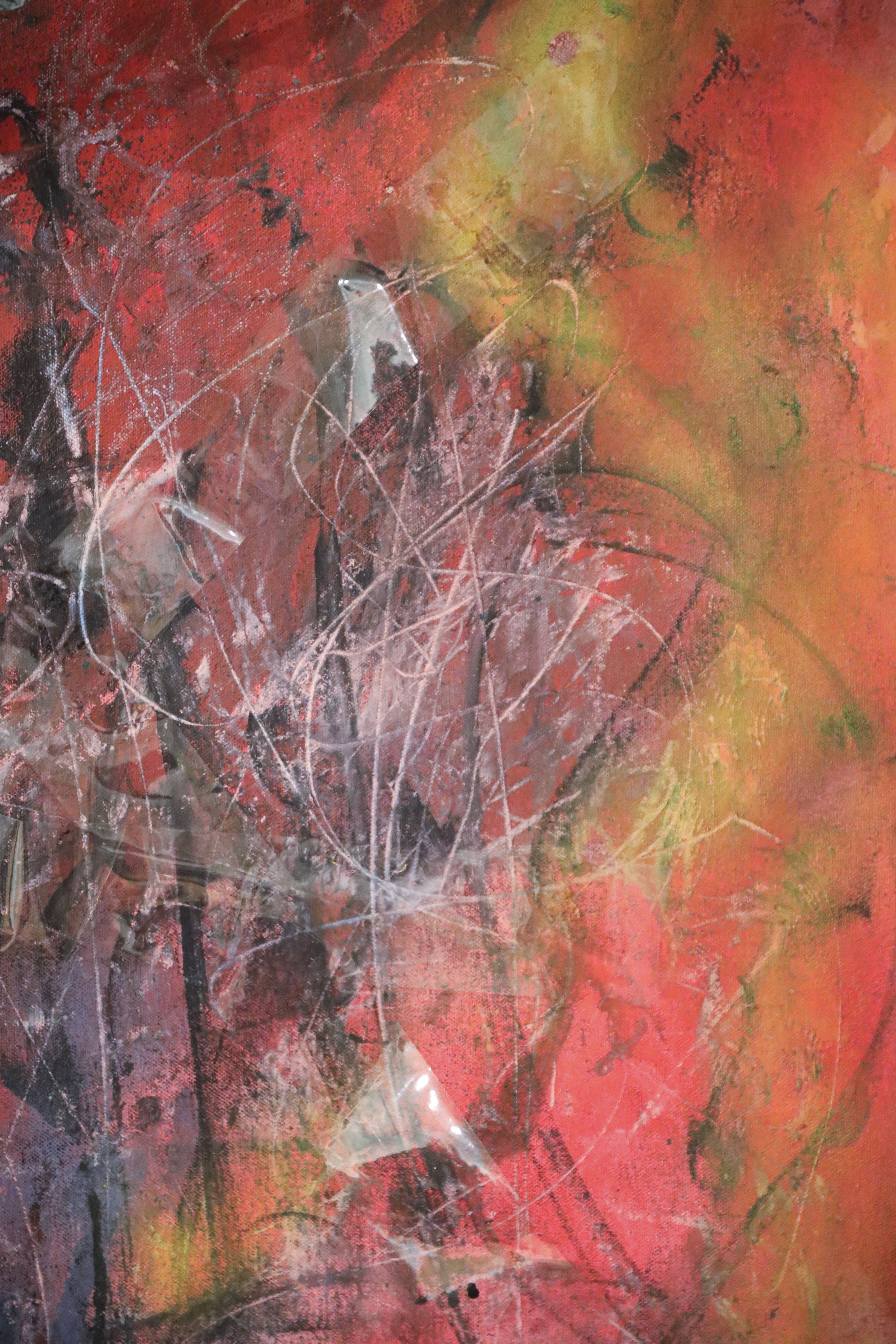
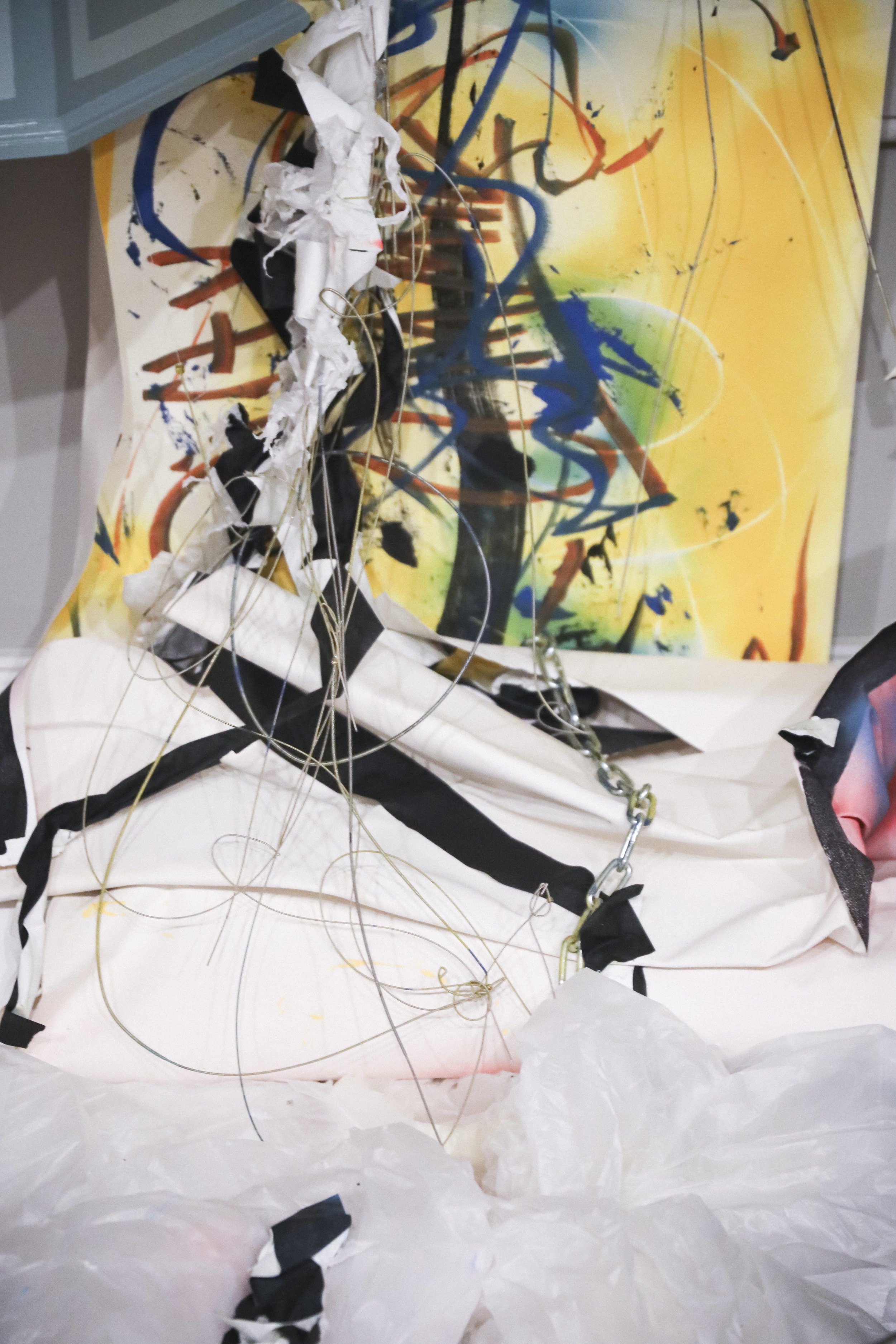














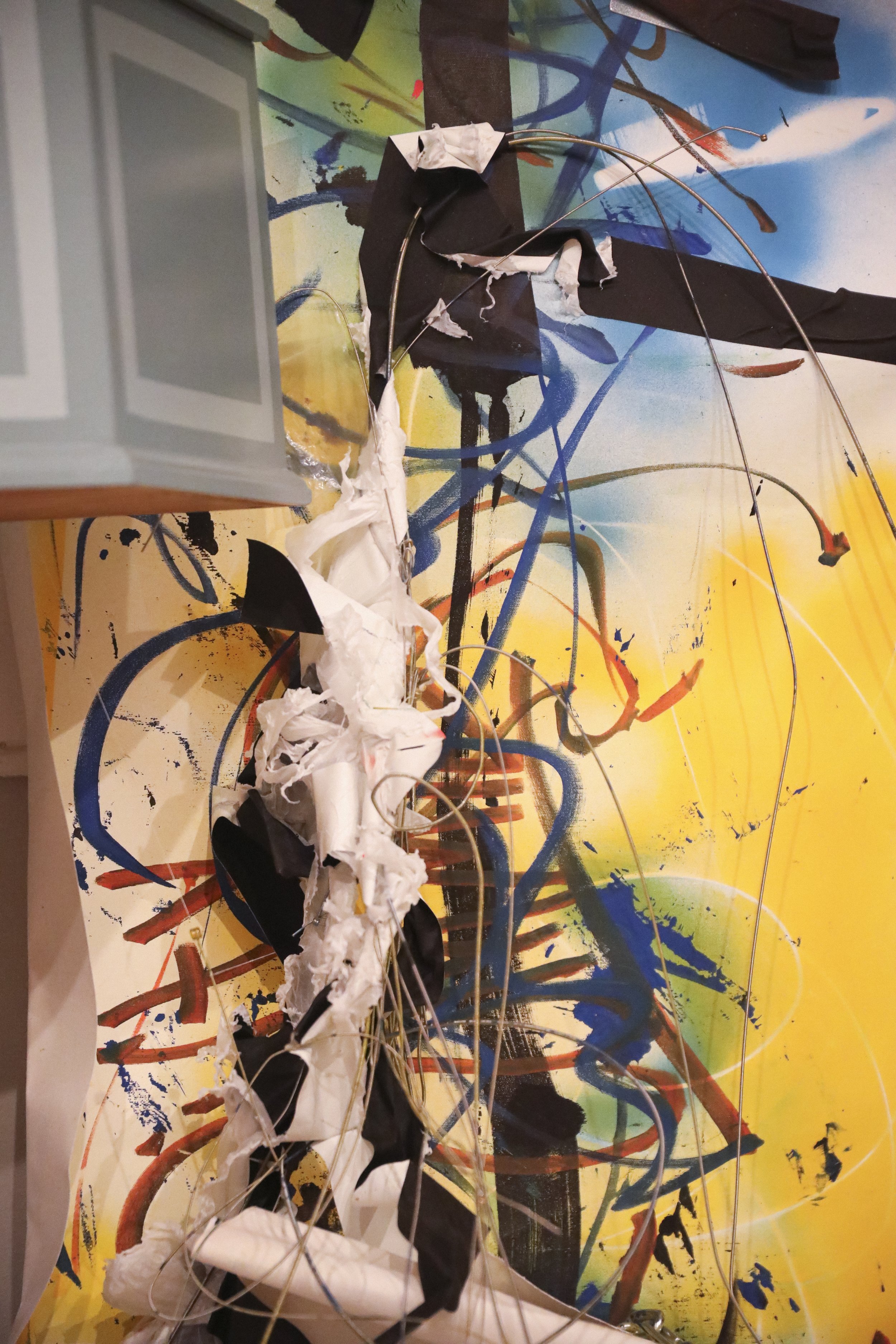







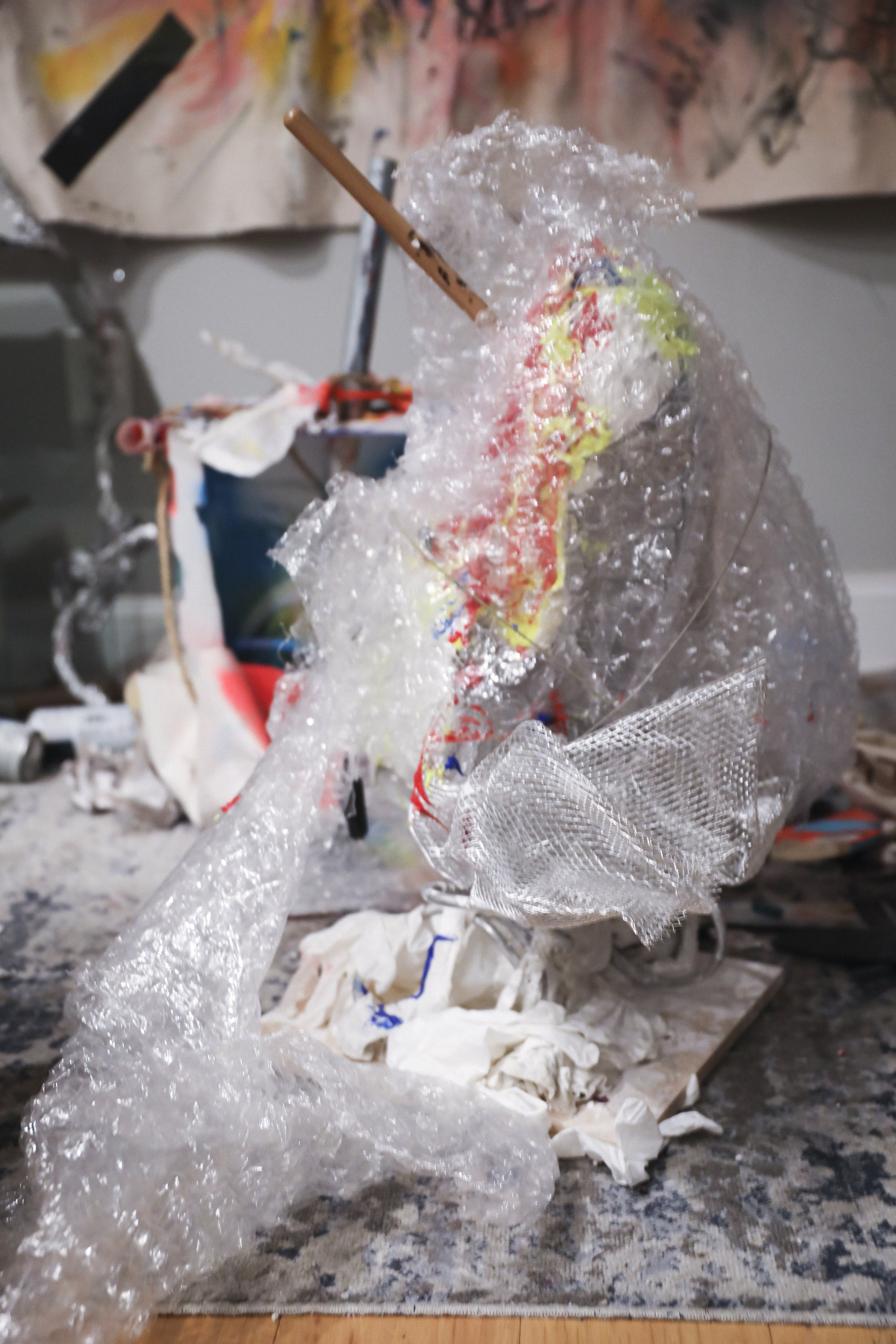
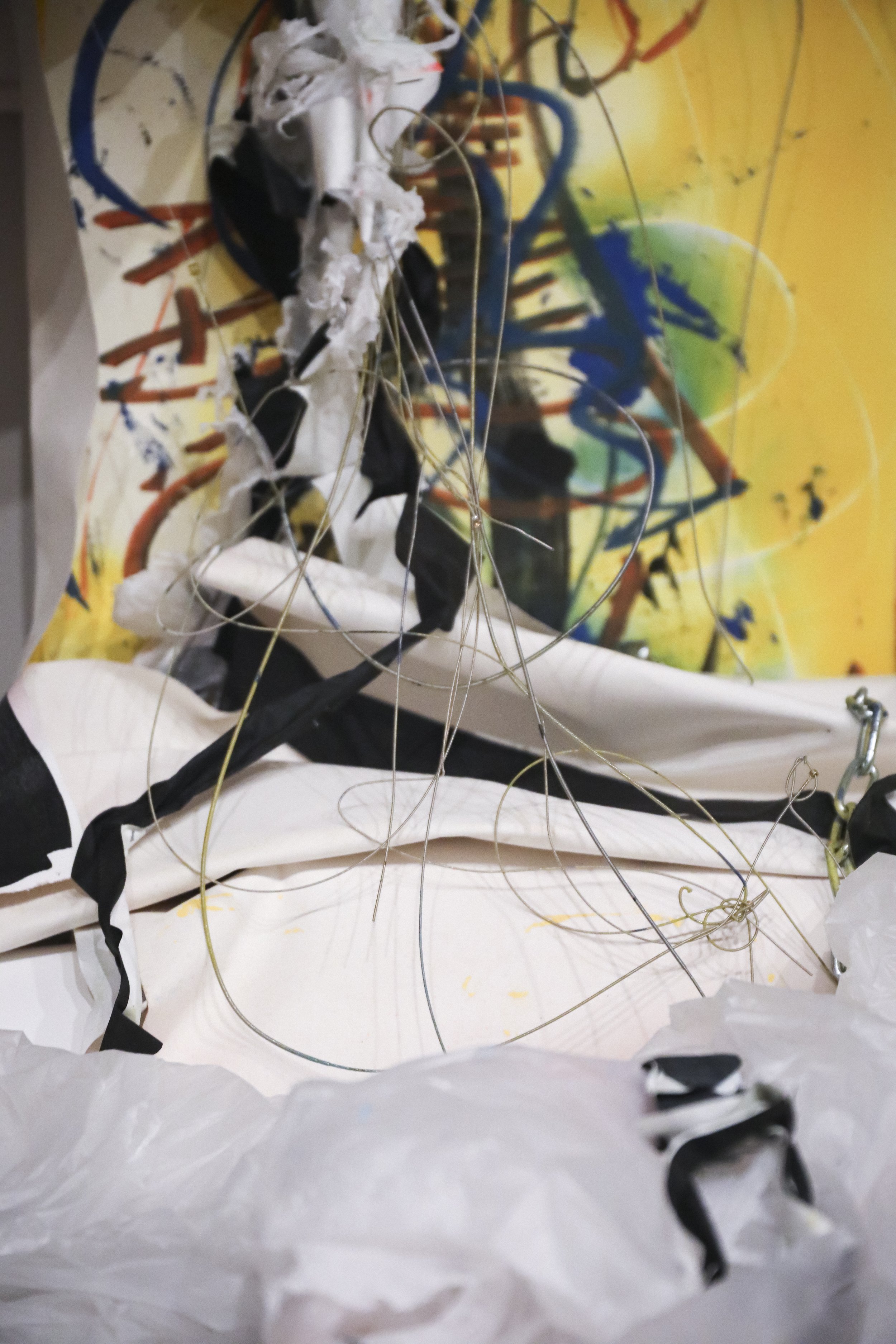






here’s all my works

who i am
i’m sebastian suarez-solis. yes, named after the crab. yes, really.
i play, i perform, i compose, i create, i live, love, laugh.
i think of my music sometimes as people-watching, like a way of presenting some small element of human behavior through sound or visuals.
other times, it’s a microcosm of human systems, a living, breathing behavioralideologicalpolitical diorama.
in a few different ways:
other other times, i make hybrid, intertextual chimaera pieces which are some part one art form and some other part another artform.
i play contemporary and theatrical percussion, harpsichord, and viola da gamba. i compose on the harpsichord to easily switch between temperaments/tunings.










